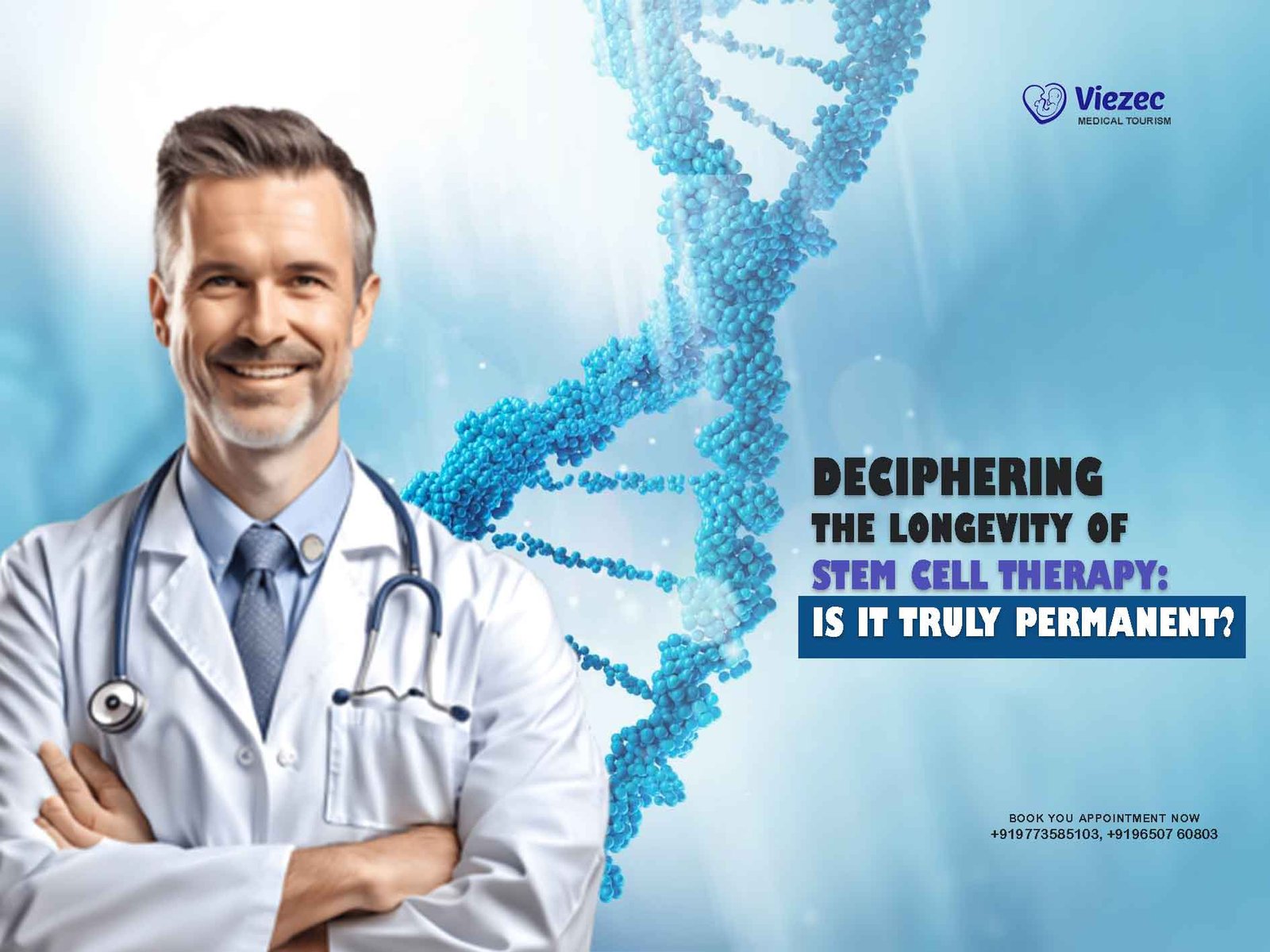Stem cell therapy has emerged as a promising avenue in the realm of regenerative medicine, offering potential solutions for various ailments that were once considered incurable. From treating degenerative diseases to facilitating tissue regeneration, the applications of stem cell therapy are vast and diverse. One of the most intriguing aspects of this therapy is the notion of longevity – the extent to which its effects endure over time. While initial results may appear promising, questions linger regarding the permanence of these benefits. In this comprehensive exploration, we delve into the intricacies of stem cell therapy, examining its mechanisms, current applications, and the pivotal question: Is it truly permanent?
Understanding Stem Cell Therapy
Unveiling the Basics
At the core of stem cell therapy lies the remarkable versatility of stem cells themselves. Stem cells possess the unique ability to differentiate into various cell types within the body, offering the potential to replace or repair damaged tissues and organs. This inherent capability forms the foundation of stem cell therapy’s therapeutic potential.
Types of Stem Cells
Embryonic Stem Cells
Embryonic stem cells, derived from embryos, are pluripotent, meaning they can give rise to any type of cell in the body. Their immense regenerative potential makes them highly valuable in research and therapeutic applications.
Adult Stem Cells
Adult stem cells, also known as somatic or tissue-specific stem cells, exist in mature tissues throughout the body. While they are multipotent, capable of differentiating into a limited range of cell types, their presence in various tissues enables localized repair and regeneration.
Mechanisms of Action
Stem cell therapy operates through multiple mechanisms, each contributing to its regenerative effects:
Cell Replacement
One of the fundamental mechanisms involves the direct replacement of damaged or dysfunctional cells with healthy, functional ones derived from stem cells. This process is particularly relevant in conditions where cell loss or dysfunction underlies the pathology.
Paracrine Signaling
Stem cells secrete a myriad of bioactive molecules, including growth factors, cytokines, and extracellular vesicles, which exert potent paracrine effects. These signaling molecules modulate inflammation, promote tissue repair, and stimulate endogenous regenerative processes.
Immunomodulation
Stem cells possess immunomodulatory properties, capable of modulating the immune response in various disease states. By suppressing aberrant immune activation or fostering immunological tolerance, stem cells facilitate tissue preservation and regeneration.
Clinical Applications
Stem cell therapy has demonstrated considerable promise across a spectrum of medical conditions, including but not limited to:
- Neurological Disorders: Conditions such as Parkinson’s disease, spinal cord injury, and stroke benefit from stem cell-based interventions aimed at neuronal regeneration and functional restoration.
- Orthopedic Injuries: Stem cell therapies offer potential solutions for musculoskeletal injuries and degenerative joint diseases by promoting cartilage repair and bone regeneration.
- Cardiovascular Diseases: Stem cells contribute to cardiac repair and neovascularization in ischemic heart disease and heart failure, mitigating tissue damage and improving cardiac function.
- Autoimmune Disorders: Stem cell transplantation holds promise for autoimmune diseases like multiple sclerosis and systemic lupus erythematosus by resetting immune dysregulation and promoting immune tolerance.
Evaluating Longevity: Is It Truly Permanent?
Persistence of Therapeutic Effects
While stem cell therapy often yields impressive short-term outcomes, the durability of these effects remains a subject of scrutiny. Long-term studies tracking patients post-treatment reveal varying trajectories of improvement, with some experiencing sustained benefits while others exhibit waning or transient responses.
Factors Influencing Longevity
Cell Survival and Engraftment
The survival and engraftment of transplanted stem cells within the host tissue significantly influence the longevity of therapeutic effects. Challenges such as immune rejection, hostile microenvironments, and limited cell retention pose barriers to sustained engraftment.
Inflammatory Milieu
The inflammatory milieu characteristic of many disease states can undermine the survival and functionality of transplanted stem cells. Persistent inflammation may impede tissue regeneration and compromise the long-term efficacy of stem cell therapy.
Age-Related Decline
Advancing age correlates with diminished regenerative capacity and an altered microenvironment, impacting the effectiveness of stem cell-based interventions. Age-related changes in stem cell function and tissue homeostasis pose challenges to achieving enduring therapeutic outcomes.
Harnessing Enhancements for Longevity
Engineering Strategies
Innovations in stem cell engineering, including genetic modification and biomaterial-based scaffolds, hold promise for enhancing cell survival, engraftment, and functionality. By bolstering the resilience of transplanted cells, these strategies aim to prolong the therapeutic effects of stem cell therapy.
Combination Therapies
Combining stem cell therapy with adjunctive interventions, such as growth factors, small molecules, or physical therapies, may augment its efficacy and longevity. Synergistic approaches targeting multiple aspects of tissue repair and regeneration offer potential avenues for enhancing long-term outcomes.
Personalized Medicine
Tailoring stem cell therapies to individual patient characteristics, including age, genetic makeup, and disease profile, enables personalized treatment strategies optimized for efficacy and longevity. Precision medicine approaches optimize therapeutic interventions based on the unique needs and responses of each patient.
Ethical Considerations and Regulatory Frameworks
The pursuit of longevity in stem cell therapy necessitates careful consideration of ethical implications and regulatory frameworks. Balancing innovation with patient safety and ethical standards remains paramount in the development and application of stem cell-based interventions.
Navigating the Path to Longevity
Stem cell therapy represents a paradigm shift in regenerative medicine, offering hope for treating a myriad of debilitating conditions. While the allure of permanent therapeutic benefits beckons, the journey toward longevity is fraught with challenges and uncertainties. Understanding the underlying mechanisms, addressing key determinants of longevity, and embracing innovative approaches are essential for realizing the full potential of stem cell therapy.
As researchers and clinicians continue to unravel the intricacies of stem cell biology and therapeutic applications, the quest for enduring solutions persists. Through collaborative efforts across disciplines, guided by ethical principles and regulatory oversight, we navigate the path to longevity, striving to transform the landscape of healthcare and improve the lives of patients worldwide.









